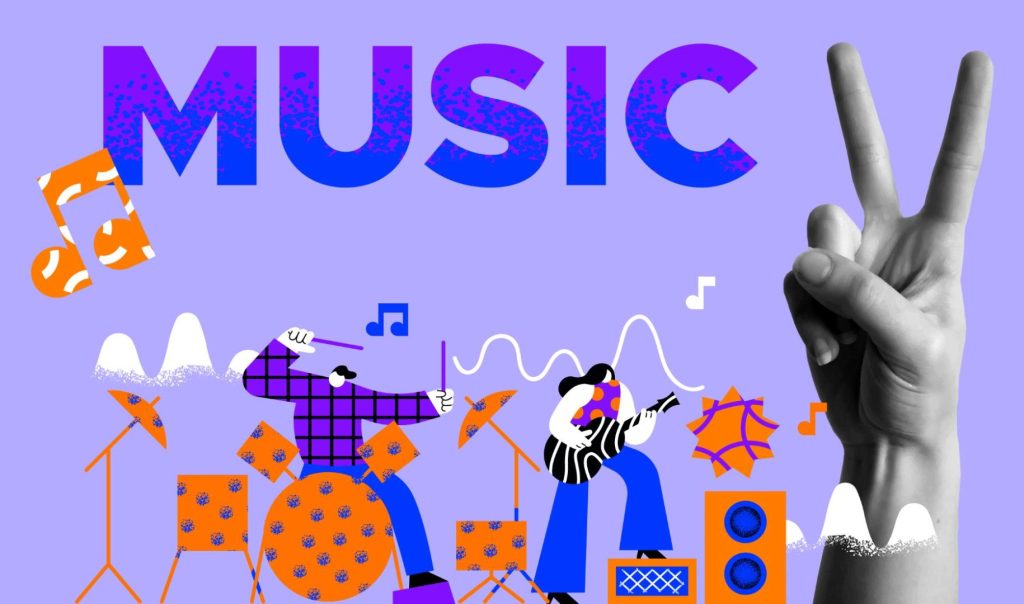
Music has been one of the greatest forces driving cultural shifts throughout human history. In particular, popular music emerged in the 20th century as a platform for personal expression and has deeply influenced society, culture, and the economy over the past 70 years. This article reviews the history of popular music from the 1950s to the 2020s, examining trends and phenomena across these decades.
1950s: The Rise of Rock and Roll
The 1950s saw the emergence of rock and roll, which gained immense popularity. Artists like Elvis Presley, Chuck Berry, and Little Richard spearheaded this genre, making it a defining symbol of youth culture and bringing a fresh wave to the music scene. This period also marked the fusion of blues and country music, resulting in the birth of new styles.
1960s: The Beatles and Counterculture
The 1960s brought music that symbolized social transformation, with rock evolving alongside these changes. Led by bands like The Beatles, The Rolling Stones, and artists like Bob Dylan, this era also witnessed large-scale events such as the Woodstock Festival, which bolstered the counterculture movement. Motown artists like Stevie Wonder and The Supremes further strengthened the presence of Black music in the pop world.
1970s: The Disco Era and Fusion's Flourishing
The 1970s were defined by the rise of disco music, popularized by artists such as The Jackson 5, the Bee Gees, and Donna Summer. Progressive rock and jazz-rock fusion also expanded experimental genres, broadening musical diversity. Additionally, punk rock emerged as a rebellious expression of youth culture.
1980s: Pop Stars and the Technological Revolution
The 1980s marked the advent of MTV, which highlighted the visual elements of music. Albums like Michael Jackson's Thriller, Madonna's Like a Virgin, and Prince's Purple Rain symbolized the fusion of music and visuals. The development of electronic instruments and digital technology also gave rise to synth-pop and electronic music as dominant trends.
1990s: Globalization and Genre Diversification
The 1990s saw the rise of hip-hop and R&B, with artists like Tupac, The Notorious B.I.G., and Mariah Carey achieving massive success. Meanwhile, grunge and alternative rock gained traction among youth, led by bands like Nirvana and Pearl Jam. The internet revolutionized music distribution, and the proliferation of MP3s drastically changed music consumption.
2000s: Digitization and Streaming
The 2000s were defined by the dominance of digital music, with platforms like iTunes and Spotify emerging. The shift from music purchases to streaming reshaped the industry. Additionally, YouTube provided new opportunities for global exposure to aspiring artists. This era was led by stars like Beyoncé, Rihanna, and Eminem.
2010s: Streaming's Domination and Electronic Music's Growth
Streaming services became the primary mode of music consumption in the 2010s, with Spotify and Apple Music dominating the market. Electronic music flourished, with artists like Avicii, Calvin Harris, and The Chainsmokers achieving global success. This period also saw genre-defying artists like Billie Eilish and Ed Sheeran rise to prominence.
2020s: Accelerated Globalization and Digital Art
The 2020s have seen the rise of AI and internet technologies in music creation. Virtual artists and AI-generated compositions are becoming mainstream, expanding the possibilities of music. The COVID-19 pandemic accelerated the adoption of live streaming, establishing online events as new venues for musical experiences. K-pop acts like BTS and BLACKPINK have continued to drive the globalization of popular music.








